A Master plan for a Modern Agricultural Science and Education Demonstration Park at Gaoyou
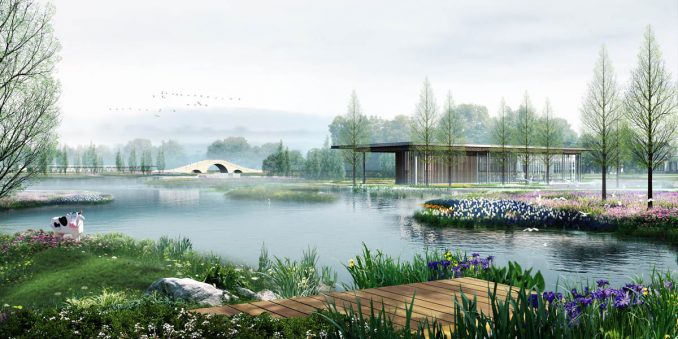
Background
Faced with the threat of flooding, Chinese ancestors living in the Lixia River Basin of the Huaihe River Basin built low-lying paddy fields surrounded by dikes by excavating rivers, forming an agroecological region with a dense network of natural and artificial rivers. Unfortunately, the recent agricultural production method of using pesticides and fertilizers and building large-scale animal farms in pursuit of high outputs has produced untreated non-point surface pollution. Such pollution has been directly discharged into the dense network of rivers in the region, spreading to cause an ecological crisis.
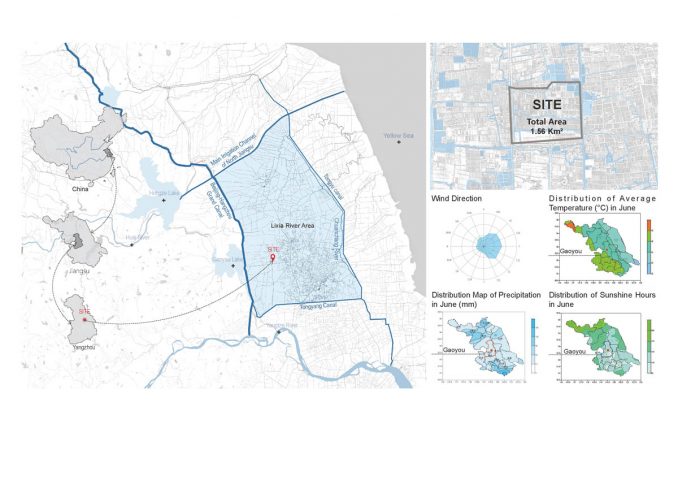
With the support of a multidisciplinary team of experts, the planning team plans to build a 1.56 km2 modern agricultural science and education demonstration park in Gaoyou City of the Lixia River region, to create a new, efficient, pollution-free and replicable agricultural production method through the integrated application of various means and technologies, and to explore ways to improve the drawbacks of regional agricultural production and cope with ecological challenges.
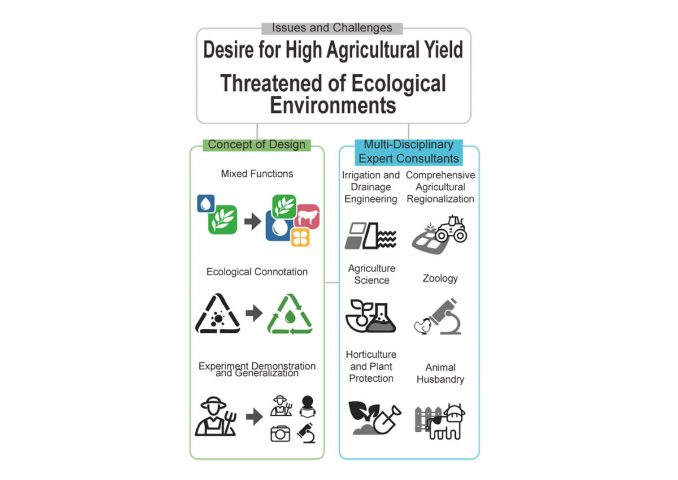
The Project Planning Process
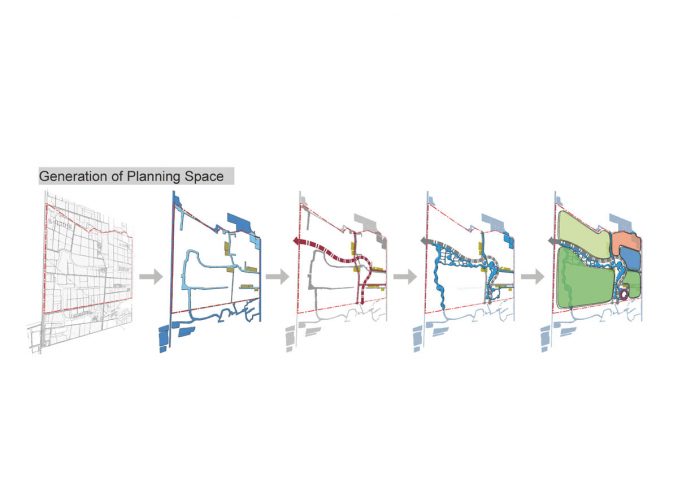
Step 1: Optimizing the layout of the agricultural industry to enhance production efficiency
Based on the current basic conditions of the base, the plan integrates the surrounding areas, explores the potential of the land, and further enhances the efficiency of agricultural production through various measures to improve the output per unit of land.
Compare the expected incomes before and after the adjustment of the industrial structure—for example, compared with current agricultural production, the average value generated per unit of land in the base after the adjustment increases by 837%.
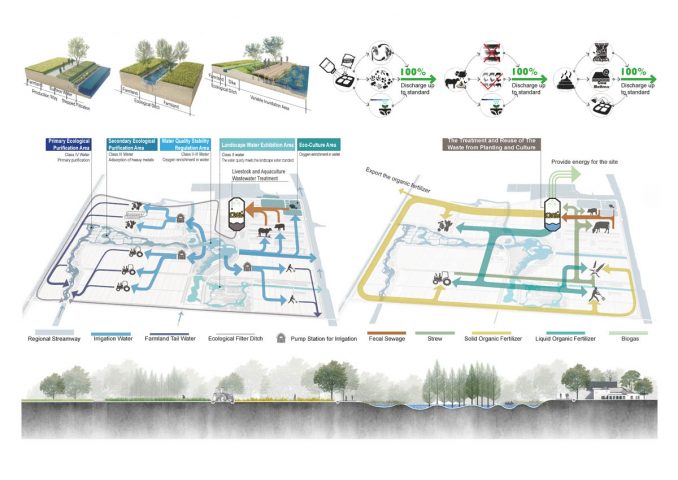
Step 2: Construction of an agriculture system cycle and technical support
The plan aims to diversify the treatment of planting (breeding) wastewater (water), gradually combine treatment with graded utilization, and establish an agricultural model for ecological recycling.
Pre-assessment of waste (water) discharge from planting (breeding): After the comprehensive application of various treatment measures, the rate of reaching the standard for waste (water) discharge in the base is 100%.
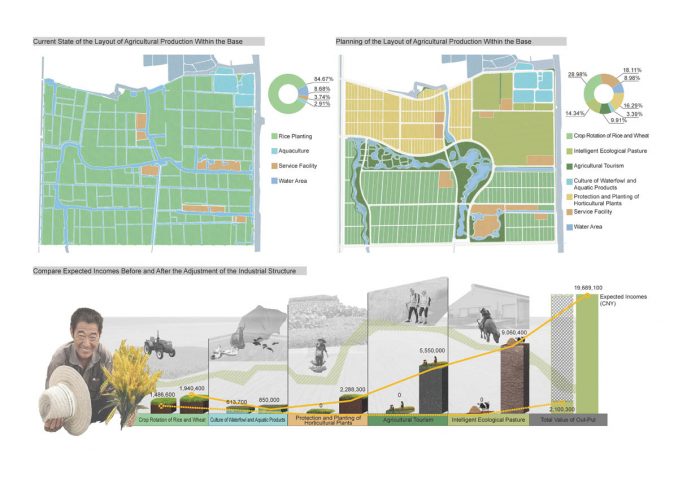
Step 3: Shape a resilient Eco-agricultural base based on water use
Water Supply and Flood Control
Existing waterways and water facilities are slated to be linked, dredged, and integrated inside and outside the base to build a functional water ecosystem. Through purification and filtration of channel diversions and natural precipitation, it supports a high standard of water for agricultural irrigation and green and healthy farming while coping with the risks posed by extreme precipitation during the flood season.
Purification and recycling of water ecology
Relying on the wetland system to regulate the rain flood and purify water quality, the regional water ecological balance is maintained to build the foundation for ecological agriculture.
Planning vision
To advance the project’s demonstration and showcase function in the Lixia River area and promote the development of sustainable and pollution-free agriculture in the region.
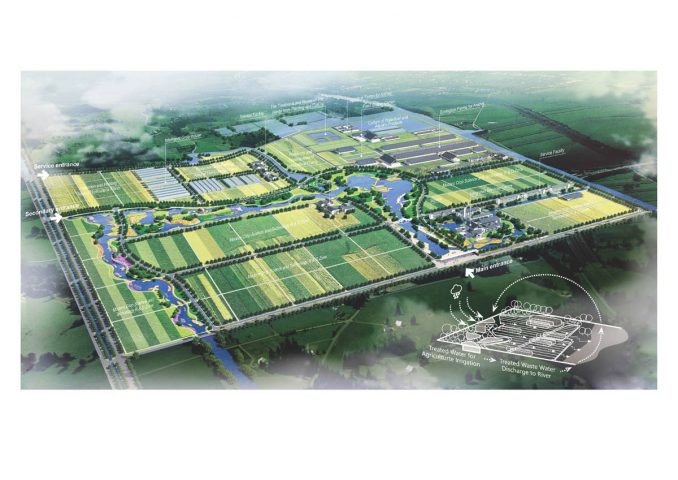
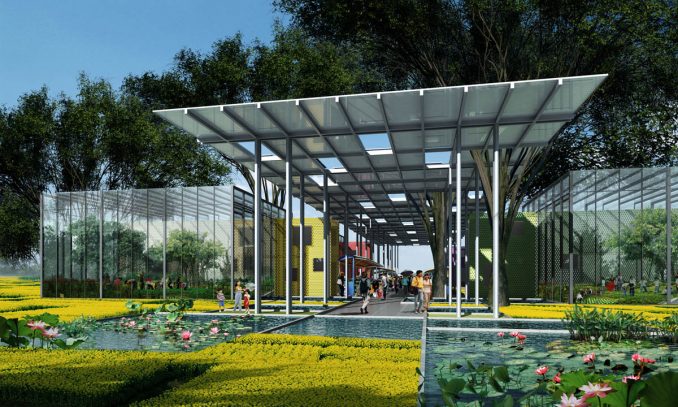
Exploring the Development Model of Ecological Agriculture in the Lixia River Area of China’s Huaihe River Basin
Landscape Architect | Shanghai Edging A&LA Co.LTD
Designers | Yun Wang, Dawei Xie, Feng Dong, Puhong Yang, Min Yao, Yunzhi Ling, Lei Liu, Jiao Shen, Bing Liu, Dawei He, Qianyong Wen, Yiting Hu
Partners | Shanghai Chengxiang Architectural Design Institute Co.LTD,Shanghai Jiao Tong University
Image Credit | Shanghai Edging A&LA Co.LTD
